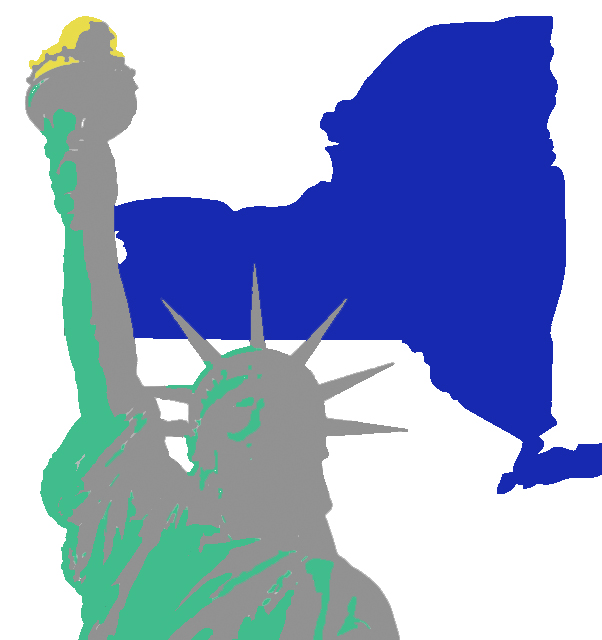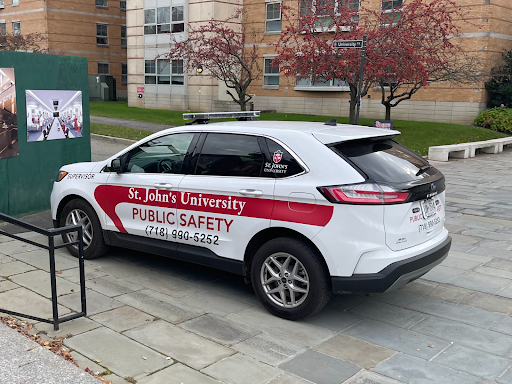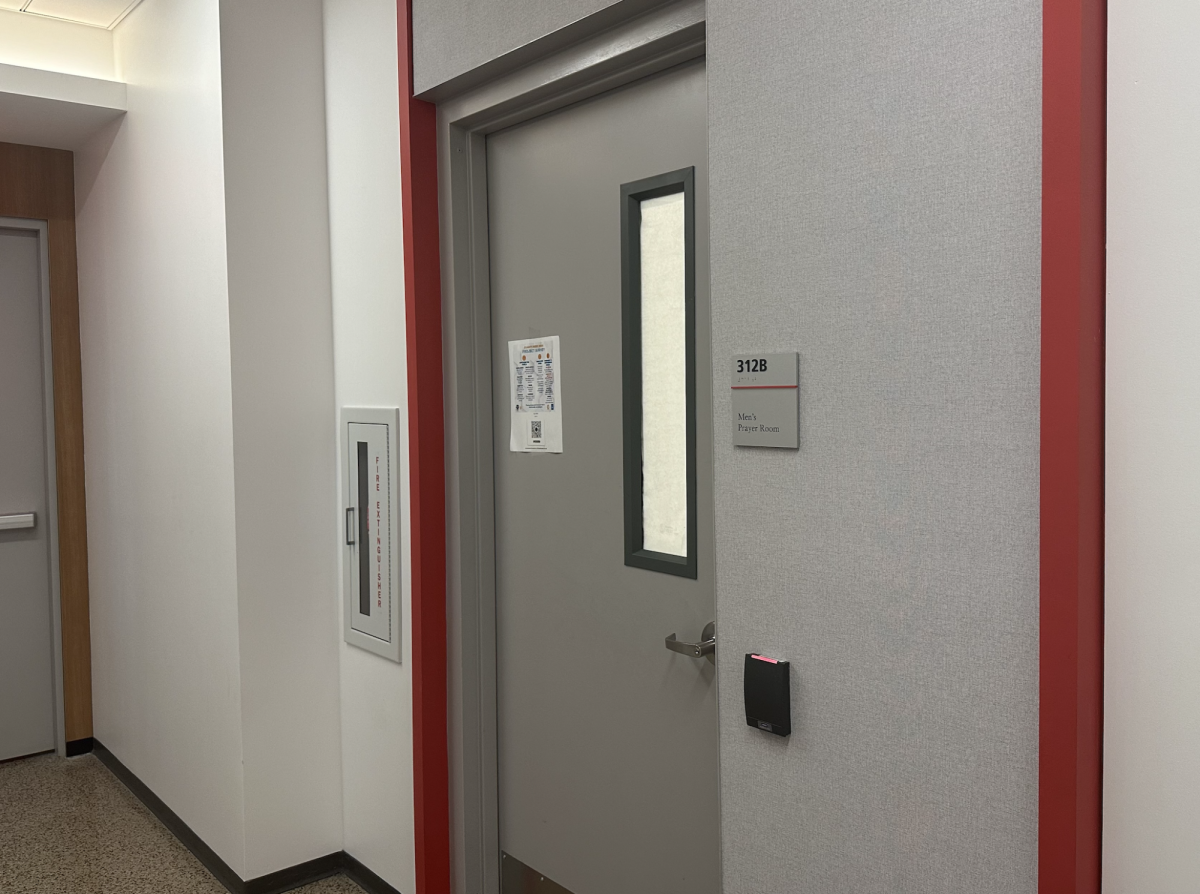In April, New York became the first state in the nation to provide a pathway to a tuition-free four-year college education to qualified state residents at public schools. To receive what’s known as the Excelsior Scholarship, the main requirement is a household income below $100,000.
What does that mean for private universities such as St. John’s trying to attract students who now may qualify for free tuition at a public school?
The effect that the much-touted scholarship program has had on the state “was a shock really to everyone in New York State, not just the private industry,” the Vice Provost and Chief Enrollment Officer Jorge Rodriguez said.
“We can take a hit, not that we want it, but we can bounce back. Because of our size, we’re lucky enough having over 20,000 students,” he said. “It gives us a little breathing room where it’s not doomsday.”
However, “because of Excelsior we’re going to have to go out of state and upstate a little bit more,” he said. “We estimate about 100-130 students were impacted by Excelsior and elected to go to a state or city university.”
“What people don’t realize is that even the public schools are impacted by this and some of them, not very directly but indirectly—negatively,” he added.
As a private university, St. John’s students aren’t eligible for the Excelsior Scholarship. Instead, students at private schools who fit the same profile—mainly households with less than $100,000 in income—can receive an Enhanced Tuition Award (ETA) from the state up to a maximum of $3,000. However, the program requires that school must match the award, with a total possible award equaling $6,000, and freeze tuition for that student.
While it’s clearly not representative of full tuition, this program was seen as an attempt to help private schools that might be hurt by the Excelsior Scholarship. Private schools must choose to take part; the University is a participant of the ETA.
“Any time we see a student who is economically deserving, how can we say no? Even if it will cost us money,” Rodriguez said. The University decided to limit the program to 600 students with an estimated cost of $1 million, he added.
Not everyone at St. John’s who was eligible for the ETA program took part. Rodriguez speculated that it was probably due to the program’s requirements, which mirror those of the Excelsior Scholarship. These include taking 30 credits per year, graduating in a timely fashion and living and working in the state after graduating for the same number of years that the student received the award. If a student fails to abide by any of these requirements, the scholarship reverts to an interest-free loan.
These conditions are not a deterrent to everyone, however. If the scholarship was available when he was freshman, senior Matt Garzon said he likely would have attended a CUNY or SUNY instead of St. John’s.
“Of course, St. John’s offers a better education in many fields, but CUNY/SUNY also provides good education as well. That, alongside with free tuition would have definitely changed my mind,” Garzon said. “For someone who plans on working/moving elsewhere this wouldn’t be a good idea obviously.”
Sophomore Maggie Chen said she considered transferring to a CUNY when she heard about Excelsior. “My parents even suggested it many times,” she said. “Financially it would make a lot of sense if I transferred to a CUNY but St. John’s is where my heart is at.”
Chen said she values the opportunities at St. John’s and how it “actually feels like college. I have a handful of CUNY friends and they complain about how miserable they are at Hunter. How everyone just goes to class and then home, that there’s not really much going on.” However, she said she’s still considering her options.
The maximum award through Excelsior is $5,500 per academic year in contrast to the average tuition of $6,670 for SUNY and $6,530 for CUNY schools.
Excelsior is a last-dollar scholarship, meaning the award is given after all other sources of aid have been exhausted, such as the state’s Tuition Assistance Program, federal grants and loans. The scholarship does not cover room and board, books and supplies or other university fees.
Criticism surrounding Excelsior cite the conditions students must abide by to remain eligible.
“Most of the people who go to city university are working because they come from a lower economic status,” Rodriguez said. “That’s why they start there to begin with and they can’t take 15 credits a semester. They have to work.”
“So, many of them take 12 credits and immediately they’re out of the system, they don’t get free tuition any longer,” he sais. “You want to say you’re doing something but it’s not really helping every student.”
In comparison, Rodriguez said it’s vital for St. John’s to have “families realize what is the value of a private education.”
The Commission on Independent Colleges and Universities in New York (CICU), of which St. John’s is a member, “has shown that students who go to a private school graduate faster than students who go to public and city colleges,” Rodriguez said.
The CICU published a report in March regarding the impact of the Excelsior Scholarship in which it concluded “that there would be significant enrollment reductions at private, not-for-profit colleges and universities with accompanying negative economic effects.”
It found that the New York City region would lose 23,562 students and 23,967 jobs due to the Excelsior Scholarship, as it expects an exodus of students moving to CUNY and SUNY schools.
Although tuition is less expensive at public schools compared to private universities such as St. John’s, “nobody pays the sticker price at some colleges,” Executive Director of Media Relations Brian Browne said. “There’s really some myths and I think CICU has done a very good job as dispelling some of those myths.
“But when free is across the street, people are drawn to free.”
An Inside Higher Ed article from April described the implications of the scholarship on private schools around the state in these terms: “the pressure will be highest on tuition-dependent colleges and universities that already compete for students in part by heavily discounting their tuition and that draw most of their students from inside the state.”
Rodriguez said on average three out of every five undergraduate students at St. John’s come from New York, where it is one of the largest private universities. Enrollment here has declined, Rodriguez said, but he emphasized that the Excelsior Scholarship is just one of several reasons. He also cited political issues out of the University’s control.
Rodriguez said some smaller private schools are unable to take the hit in first-year enrollment and have had to offer significant tuition discounts to compete with Excelsior, which he called “unsustainable.” He said the tuition discount rate at St. John’s varies with each incoming class and is flexible.
“If we get more of a certain type [of student], we will help them,” Rodriguez said. “We offer one of the highest discounts for a private, Catholic school compared to other institutions. We want to make sure that the high achieving students get rewarded.”
Additionally, St. John’s is the largest private recipient of funds through the state’s Tuition Assistance Program, Browne said. TAP is available to students with a household income of less than $80,000 to use at both public and private colleges.
“[Excelsior] is a challenge that the University understands but it’s a challenge that we’re working with right now, both on the budget end and trying to come up with other avenues where we can express the value of our education,” Rodriguez added.
“Why St. John’s? We’re one of the top universities that sends students abroad. What makes us different? Why would a student want to come here? It really is the quality of education and everything intrinsic that comes with it.”
He also referenced how St. John’s is a “culturally diverse campus.”
According to Rodriguez, first-year retention rates have increased to 84 percent under President Gempesaw. And as the retention rate increases, he said, so does the graduation rate.
“We try to find those students,” he said, “that we think will be successful at St. John’s.”
















